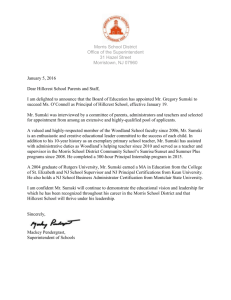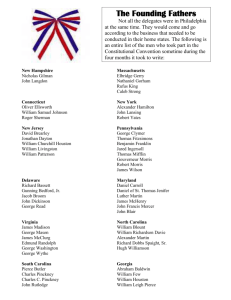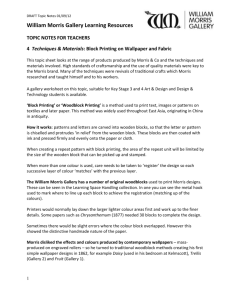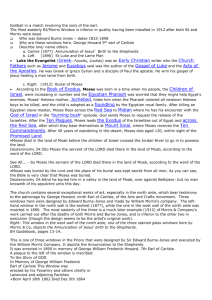WILLIAM MORRIS - martateacher3y5
advertisement
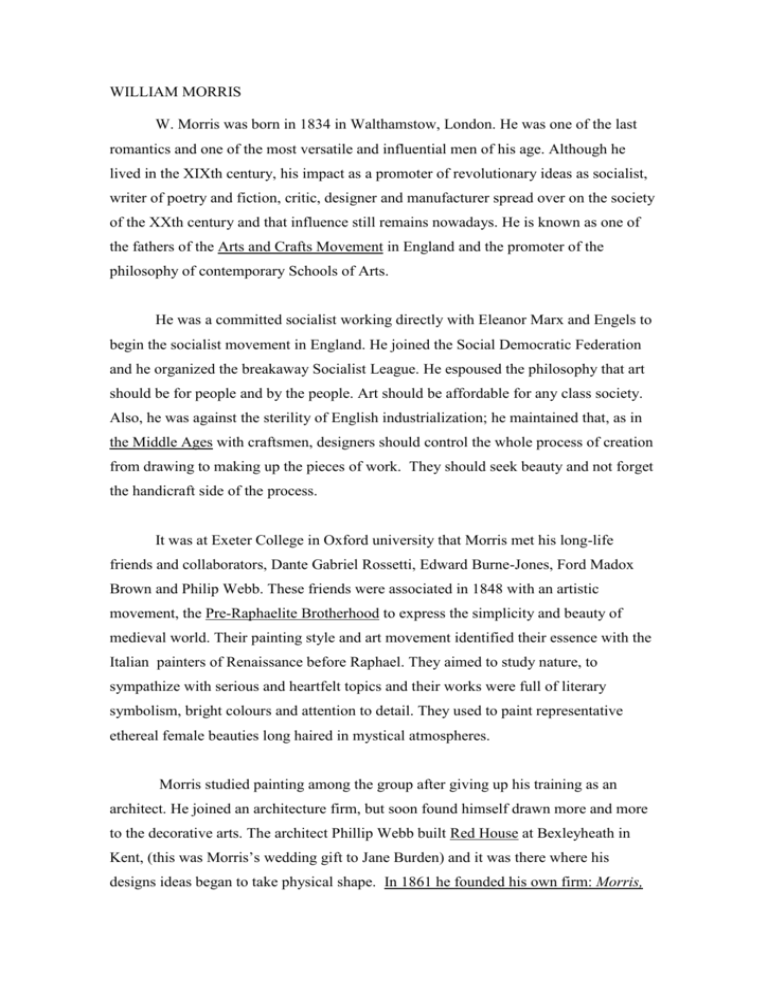
WILLIAM MORRIS W. Morris was born in 1834 in Walthamstow, London. He was one of the last romantics and one of the most versatile and influential men of his age. Although he lived in the XIXth century, his impact as a promoter of revolutionary ideas as socialist, writer of poetry and fiction, critic, designer and manufacturer spread over on the society of the XXth century and that influence still remains nowadays. He is known as one of the fathers of the Arts and Crafts Movement in England and the promoter of the philosophy of contemporary Schools of Arts. He was a committed socialist working directly with Eleanor Marx and Engels to begin the socialist movement in England. He joined the Social Democratic Federation and he organized the breakaway Socialist League. He espoused the philosophy that art should be for people and by the people. Art should be affordable for any class society. Also, he was against the sterility of English industrialization; he maintained that, as in the Middle Ages with craftsmen, designers should control the whole process of creation from drawing to making up the pieces of work. They should seek beauty and not forget the handicraft side of the process. It was at Exeter College in Oxford university that Morris met his long-life friends and collaborators, Dante Gabriel Rossetti, Edward Burne-Jones, Ford Madox Brown and Philip Webb. These friends were associated in 1848 with an artistic movement, the Pre-Raphaelite Brotherhood to express the simplicity and beauty of medieval world. Their painting style and art movement identified their essence with the Italian painters of Renaissance before Raphael. They aimed to study nature, to sympathize with serious and heartfelt topics and their works were full of literary symbolism, bright colours and attention to detail. They used to paint representative ethereal female beauties long haired in mystical atmospheres. Morris studied painting among the group after giving up his training as an architect. He joined an architecture firm, but soon found himself drawn more and more to the decorative arts. The architect Phillip Webb built Red House at Bexleyheath in Kent, (this was Morris’s wedding gift to Jane Burden) and it was there where his designs ideas began to take physical shape. In 1861 he founded his own firm: Morris, Marshall, Faulkner and Company with Rossetti, Burne-Jones, Phillip Webb and other members of the Pre-Raphaelite group who worked cooperatively stained glass for windows, furniture, wallpaper, tapestries, textiles, drawings and paintings. Morris also lived and worked in other houses, he founded the Kelmscott Press House at Hammersmith, London, in order to produce examples of improved printing and book design. The books were designed with the prevalence of lithography, particularly those lithographic prints designed to look like woodcut prints. He died in this house at the age of 62 in 1896 leaving a legacy of writings, translations and works of design. The Morris Societies in Britain, the US and Canada are active in preserving Morris´s work and ideas today. Red House was opened up to the public by The National Trust in 2004. His designs are still sold today under licences given to different firms of London, in contradiction to Morris´s ideas against massive production. SLIDES The wallpapers and tapestries designs are characterized by elements of nature like plants with curved shapes filling the space with symmetrical figures of leaves and flowers. 1. The artichoke wallpaper. 2. 2. Acanthus wallpaper. 3. Red House. Morris lived and worked here for five years. 4. Red House. 5. Flora. Tapestry 6. Green leaves, wallpaper. 7. Fruits 8. Flowers 9. &St Martin´s Church, Brampton. Stained glass windows. 10. St Martin´s Church, Brampton. Stained glass windows. 11. Detail. Pelican 12. Stained glass, front side. 13. Morris´s only surviving easel painting, now in the Tate Gallery. Iseult or Queen Guenevere. 14. Book design. Horace. Typical ornamented border. 15. Illustration. Lithography which resembles the woodcut technique. 16. This tapestry is one of a series called “The quest of the Holy Grail” designed by Morris and Co. there are 5 pieces, each recounting a different part of the story of King Arthur´s search for the Holy Grail. This is the second of the series and it is titled “The arming and departure of the knights. 17. Panel of ceramic tiles



